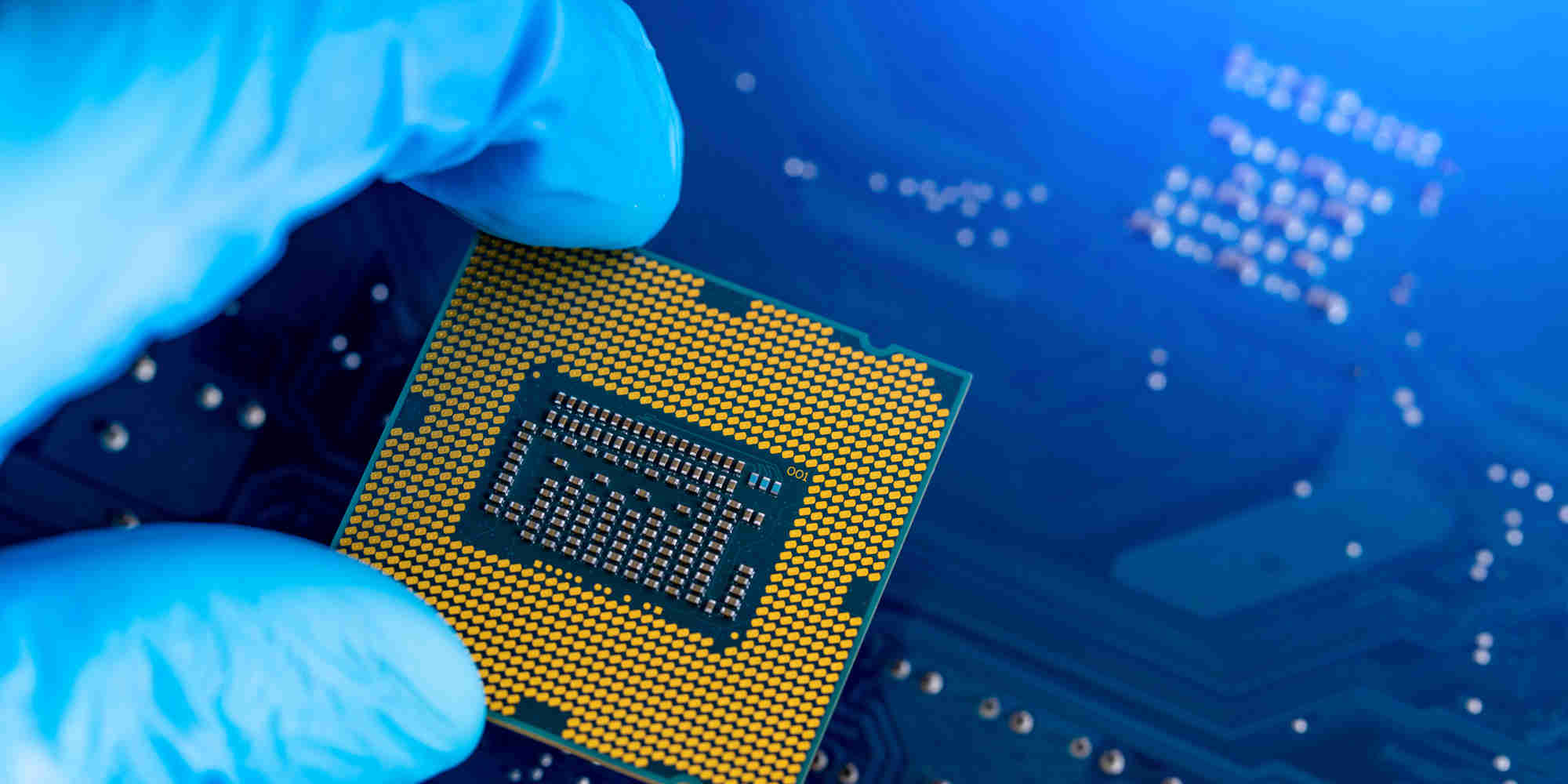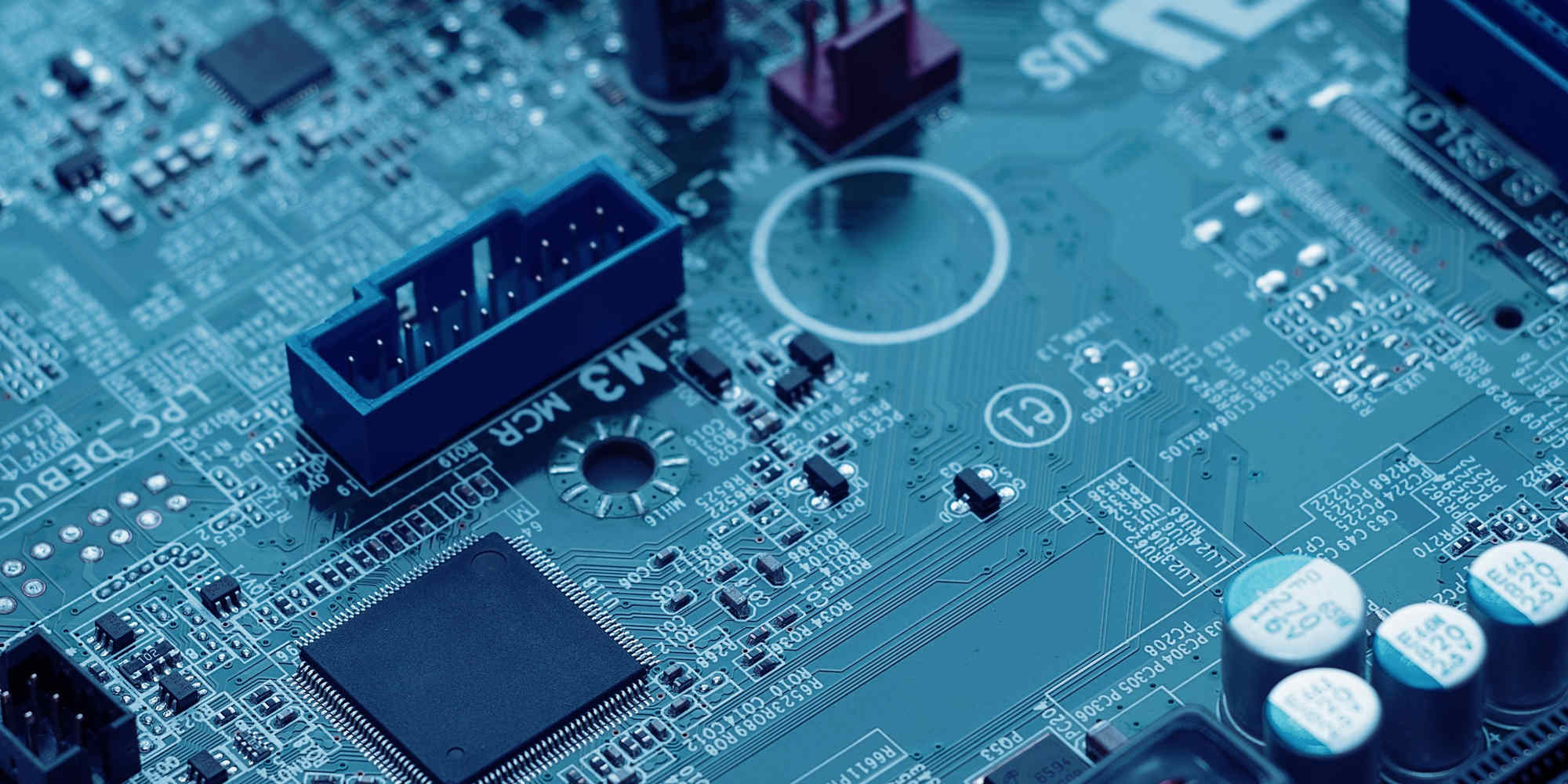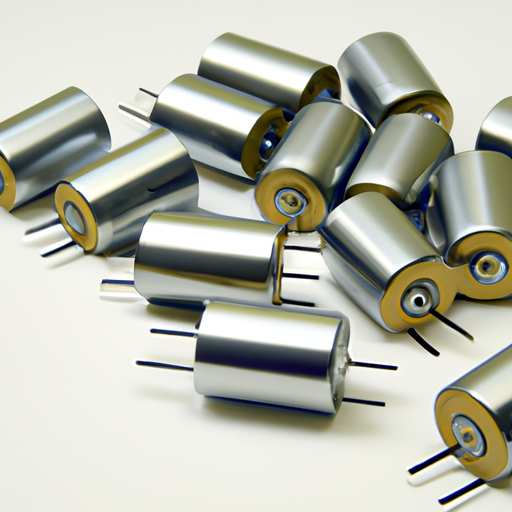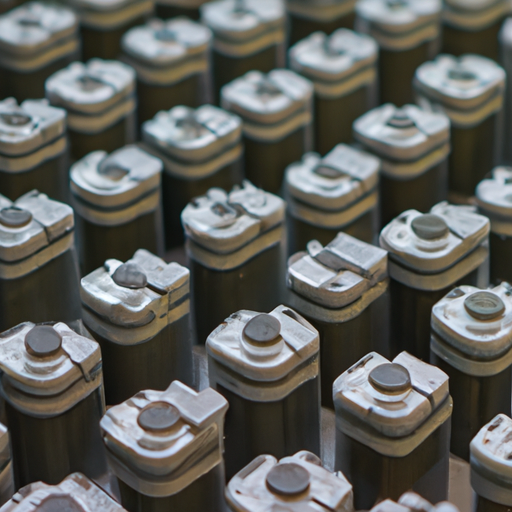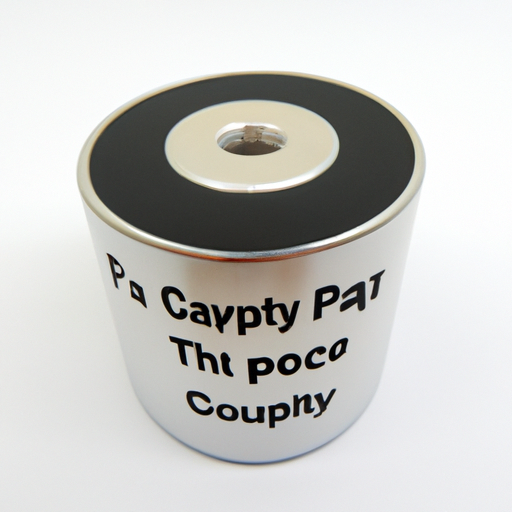CORE_COMPETENCE
Product_Leaders
index_more
index_more_content
info_item01
info_item_content01
info_item02
info_item_content02
info_item03
info_item_content03
info_item04
info_item_content04
NEWS
NEWS
What is the production process of mainstream low-voltage capacitors?
The Production Process of Mainstream Low-Voltage Capacitors
I. Introduction
Low-voltage capacitors are essential components in a wide array of electronic devices, from smartphones to household appliances. These capacitors store and release electrical energy, playing a crucial role in regulating voltage and filtering signals. As technology advances, the demand for efficient and reliable low-voltage capacitors continues to grow. This blog post will explore the production process of mainstream low-voltage capacitors, detailing the various types, raw materials, manufacturing steps, quality control measures, and future trends in the industry.
II. Types of Low-Voltage Capacitors
Low-voltage capacitors come in several types, each with unique characteristics and applications:
A. Ceramic Capacitors
Ceramic capacitors are widely used due to their small size, low cost, and stability. They are made from ceramic materials that act as dielectric substances, making them suitable for high-frequency applications.
B. Electrolytic Capacitors
Electrolytic capacitors are polarized components that offer high capacitance values in a compact form. They are commonly used in power supply circuits and audio applications.
C. Film Capacitors
Film capacitors utilize thin plastic films as dielectric materials. They are known for their reliability and stability, making them ideal for applications requiring precision.
D. Tantalum Capacitors
Tantalum capacitors are known for their high capacitance and voltage ratings in a small package. They are often used in military and aerospace applications due to their robustness.
E. Comparison of Different Types
Each type of capacitor has its advantages and disadvantages, making them suitable for specific applications. For instance, ceramic capacitors are excellent for high-frequency circuits, while electrolytic capacitors are preferred for power supply applications due to their high capacitance.
III. Raw Materials
The production of low-voltage capacitors begins with the selection of raw materials, which significantly influence the performance and reliability of the final product.
A. Overview of Materials Used in Low-Voltage Capacitors
1. **Dielectric Materials**: The dielectric material is crucial for a capacitor's performance. Common dielectric materials include ceramic, polyester, polypropylene, and tantalum oxide.
2. **Conductive Materials**: Electrodes are typically made from conductive materials such as aluminum, tantalum, or silver, which facilitate the flow of electrical current.
3. **Packaging Materials**: The encapsulation and packaging materials protect the capacitor from environmental factors and mechanical stress. Common materials include epoxy resins and plastic housings.
B. Sourcing and Quality Control of Raw Materials
Sourcing high-quality raw materials is vital for ensuring the performance and longevity of capacitors. Manufacturers often establish relationships with trusted suppliers and implement rigorous quality control measures to verify the integrity of materials before production.
IV. Design and Engineering
The design and engineering phase is critical in determining the specifications and performance characteristics of low-voltage capacitors.
A. Initial Design Considerations
1. **Capacitance Value**: The desired capacitance value is determined based on the application requirements.
2. **Voltage Rating**: The voltage rating must be established to ensure the capacitor can handle the expected electrical stress.
3. **Temperature Coefficient**: The temperature coefficient indicates how capacitance changes with temperature, which is essential for applications in varying environmental conditions.
B. Simulation and Modeling
Advanced simulation tools are used to model the capacitor's performance under different conditions, allowing engineers to optimize the design before moving to prototyping.
C. Prototyping and Testing
Prototypes are created to validate the design. These prototypes undergo rigorous testing to ensure they meet the specified performance criteria.
V. Manufacturing Process
The manufacturing process of low-voltage capacitors involves several key steps:
A. Step 1: Preparation of Dielectric Material
1. **Types of Dielectric Materials**: Depending on the capacitor type, different dielectric materials are prepared. For example, ceramic powders are mixed and processed for ceramic capacitors.
2. **Processing Techniques**: Techniques such as sintering or film extrusion are employed to create the dielectric layers.
B. Step 2: Electrode Fabrication
1. **Methods of Electrode Production**: Electrodes can be produced through various methods, including sputtering, chemical vapor deposition, or physical vapor deposition.
2. **Material Selection for Electrodes**: The choice of electrode material is critical, as it affects the capacitor's performance and reliability.
C. Step 3: Assembly of Capacitor Components
1. **Layering of Dielectric and Electrodes**: The dielectric material is layered with the electrodes, forming the basic structure of the capacitor.
2. **Techniques for Assembly**: Depending on the capacitor type, techniques such as winding (for cylindrical capacitors) or stacking (for multilayer capacitors) are used.
D. Step 4: Encapsulation and Packaging
1. **Types of Encapsulation Materials**: Encapsulation materials protect the capacitor from moisture, dust, and mechanical damage. Common materials include epoxy and silicone.
2. **Importance of Packaging in Performance and Safety**: Proper packaging ensures the capacitor's reliability and safety, especially in high-stress environments.
VI. Quality Control and Testing
Quality control is a critical aspect of capacitor production, ensuring that each component meets industry standards.
A. In-Process Quality Checks
Manufacturers implement in-process quality checks at various stages of production to identify and rectify any issues early in the process.
B. Final Testing Procedures
1. **Electrical Testing**: Capacitors undergo electrical testing to verify their capacitance, voltage rating, and leakage current.
2. **Environmental Testing**: Environmental tests assess the capacitor's performance under extreme conditions, such as temperature and humidity variations.
C. Certification and Compliance with Industry Standards
Capacitors must comply with industry standards, such as IEC and UL certifications, to ensure safety and reliability in their applications.
VII. Challenges in Production
The production of low-voltage capacitors faces several challenges:
A. Material Sourcing Issues
Supply chain disruptions can impact the availability of raw materials, leading to production delays and increased costs.
B. Technological Advancements and Their Impact
Rapid technological advancements require manufacturers to continuously innovate and adapt their production processes to remain competitive.
C. Environmental Considerations and Sustainability
Manufacturers are increasingly focusing on sustainable practices, such as reducing waste and using eco-friendly materials, to minimize their environmental impact.
VIII. Future Trends in Low-Voltage Capacitor Production
The future of low-voltage capacitor production is shaped by several emerging trends:
A. Innovations in Materials and Technology
Research into new dielectric materials and manufacturing techniques is expected to enhance capacitor performance and reduce costs.
B. The Role of Automation and AI in Manufacturing
Automation and artificial intelligence are transforming manufacturing processes, improving efficiency, and reducing human error.
C. Market Demand and Evolving Applications
As electronic devices become more sophisticated, the demand for advanced low-voltage capacitors will continue to grow, driving innovation in the industry.
IX. Conclusion
The production process of mainstream low-voltage capacitors is a complex and multifaceted endeavor that involves careful consideration of materials, design, manufacturing techniques, and quality control. As technology continues to evolve, low-voltage capacitors will remain integral to modern electronics, supporting a wide range of applications. The industry is poised for growth, with innovations in materials and manufacturing processes paving the way for more efficient and reliable capacitors in the future.
X. References
A comprehensive list of academic journals, industry reports, and manufacturer guidelines would typically follow to support the information presented in this blog post. These references would provide readers with additional resources for further exploration of the topic.
2025-02-06
How to choose spot air conditioning capacitors?
How to Choose Spot Air Conditioning Capacitors
Introduction
Spot air conditioning systems are designed to provide targeted cooling in specific areas, making them an efficient choice for both residential and commercial spaces. Unlike central air conditioning systems that cool an entire building, spot air conditioners focus on individual rooms or zones, offering flexibility and energy savings. A crucial component of these systems is the capacitor, which plays a vital role in their operation. This guide aims to educate readers on how to select the right capacitors for spot air conditioning systems, ensuring optimal performance and longevity.
1. Understanding Spot Air Conditioning Systems
Spot air conditioning refers to systems that cool specific areas rather than an entire space. These systems can be portable units, window-mounted air conditioners, or even mini-split systems. Each type has its unique features and benefits, but they all rely on capacitors to function effectively.
Capacitors are electrical components that store and release energy. In air conditioning systems, they help start and run the compressor and fan motors, ensuring that the unit operates smoothly. Understanding the different types of spot air conditioning systems and how capacitors work within them is essential for making informed decisions about capacitor selection.
2. The Role of Capacitors in Air Conditioning
Capacitors are essential for the proper functioning of air conditioning systems. They come in two primary types: start capacitors and run capacitors.
Start Capacitors: These provide a boost of energy to start the compressor and fan motors. They are typically used for a short duration and then disconnected from the circuit.
Run Capacitors: These remain in the circuit during the operation of the air conditioning unit, providing a continuous supply of energy to keep the motors running efficiently.
The importance of capacitors cannot be overstated; without them, the compressor and fan motors would struggle to start and maintain operation, leading to inefficiencies and potential system failure.
3. Key Factors to Consider When Choosing Capacitors
When selecting capacitors for spot air conditioning systems, several key factors must be considered:
3.1. Voltage Rating
The voltage rating of a capacitor indicates the maximum voltage it can handle without failing. Choosing a capacitor with the correct voltage rating is crucial for safety and performance. To determine the required voltage rating, check the specifications of your air conditioning unit. It’s generally advisable to select a capacitor with a voltage rating higher than the unit's operating voltage to ensure reliability.
3.2. Capacitance Value
Capacitance is measured in microfarads (µF) and indicates the capacitor's ability to store electrical energy. Each air conditioning system has a specific capacitance value required for optimal performance. This value can usually be found in the unit's manual or on the existing capacitor. Selecting a capacitor with the correct capacitance value is essential; too low a value may prevent the unit from starting, while too high a value can lead to overheating and failure.
3.3. Type of Capacitor
There are several types of capacitors, each with its advantages and disadvantages:
Electrolytic Capacitors: Commonly used in air conditioning systems, they offer high capacitance values but have a shorter lifespan and can be sensitive to temperature changes.
Film Capacitors: Known for their reliability and longer lifespan, film capacitors are less common in air conditioning but can be used in specific applications.
Ceramic Capacitors: These are typically used for smaller applications and are not commonly found in air conditioning systems.
When choosing a capacitor type, consider the specific requirements of your air conditioning unit and the operating conditions.
3.4. Temperature Rating
Capacitors are rated for specific temperature ranges, and selecting one that can withstand the operating environment is crucial. High temperatures can lead to premature failure, so it’s essential to choose capacitors with a temperature rating that exceeds the maximum expected temperature in the installation area.
3.5. Physical Size and Mounting
The physical dimensions of the capacitor must be compatible with the existing air conditioning unit. Measure the space available for the capacitor and ensure that the new component will fit without any modifications. Additionally, consider the mounting style; some capacitors may require specific mounting brackets or connections.
4. Identifying Quality and Reliability
4.1. Brand Reputation
Choosing reputable brands is essential for ensuring the quality and reliability of capacitors. Well-known manufacturers often have a track record of producing durable and efficient components. Researching brand reviews and customer feedback can help you make an informed decision.
4.2. Certifications and Standards
Look for capacitors that meet industry standards and certifications, such as UL (Underwriters Laboratories) or CE (Conformité Européenne). These certifications indicate that the product has been tested for safety and performance. Always verify compliance with relevant standards to ensure you are purchasing a reliable component.
4.3. Warranty and Support
A good warranty can provide peace of mind when selecting capacitors. Look for products that come with a warranty covering defects and performance issues. Additionally, consider the manufacturer's customer support options; having access to knowledgeable support can be invaluable if you encounter issues during installation or operation.
5. Installation Considerations
While some individuals may choose to install capacitors themselves, it is often advisable to hire a professional. Proper installation is crucial for the safe and efficient operation of air conditioning systems.
Safety Precautions
Handling capacitors can be dangerous, especially if they are charged. Always discharge capacitors before handling them, and use appropriate safety gear. If you are unsure about the installation process, consult a professional technician.
Common Installation Mistakes to Avoid
Incorrect Voltage or Capacitance: Double-check specifications to avoid selecting the wrong capacitor.
Poor Connections: Ensure all connections are secure to prevent electrical issues.
Ignoring Safety Protocols: Always prioritize safety when working with electrical components.
6. Maintenance and Replacement
Regular maintenance of capacitors can extend their lifespan and ensure optimal performance. Here are some tips:
Signs That Capacitors Need Replacement
Unusual Noises: Humming or buzzing sounds may indicate a failing capacitor.
Frequent Cycling: If the air conditioning unit frequently turns on and off, it may be a sign of capacitor issues.
Poor Performance: Reduced cooling efficiency can also indicate capacitor problems.
Tips for Maintaining Capacitors
Regular Inspections: Check capacitors for signs of wear or damage.
Cleanliness: Keep the area around the capacitor clean to prevent overheating.
Proper Disposal of Old Capacitors
Capacitors can contain hazardous materials, so it’s essential to dispose of them properly. Check local regulations for disposal guidelines and consider recycling options.
7. Conclusion
Choosing the right capacitors for spot air conditioning systems is crucial for ensuring optimal performance and longevity. By understanding the role of capacitors, considering key factors such as voltage rating, capacitance value, and type, and identifying quality products, you can make informed decisions.
Conduct thorough research and consult professionals when necessary to ensure that your air conditioning system operates efficiently. Proper capacitor selection and maintenance will contribute to the overall effectiveness of your spot air conditioning system, providing comfort and reliability for years to come.
References
- [Air Conditioning Capacitors: A Comprehensive Guide](https://www.example.com)
- [Understanding Capacitors in HVAC Systems](https://www.example.com)
- [Top Capacitor Manufacturers](https://www.example.com)
- [Safety Standards for Electrical Components](https://www.example.com)
This guide serves as a valuable resource for anyone looking to understand and select the right capacitors for their spot air conditioning systems.
2025-01-18
What product types are included in the capacitor capacity?
What Product Types are Included in the Capacitor Capacity?
I. Introduction
Capacitors are fundamental components in electronic circuits, playing a crucial role in storing and releasing electrical energy. They are used in a wide range of applications, from power supply circuits to signal processing, making an understanding of their capacity essential for engineers and designers. This article will explore the various types of capacitors, their characteristics, applications, and the factors influencing their selection, providing a comprehensive overview of capacitor capacity.
II. Understanding Capacitor Capacity
A. Definition of Capacitor Capacity
Capacitor capacity, often referred to as capacitance, is the ability of a capacitor to store an electrical charge. It is defined as the amount of electric charge stored per unit voltage. The higher the capacitance, the more charge a capacitor can store, which is critical for its performance in various applications.
B. Units of Measurement
Capacitance is measured in Farads (F), with practical applications often using smaller units such as microfarads (µF) and nanofarads (nF). One Farad is equivalent to one coulomb per volt, but in most electronic applications, capacitors are rated in microfarads or nanofarads due to their smaller size and the typical charge levels involved.
C. Factors Influencing Capacitor Capacity
Several factors influence the capacitance of a capacitor, including the surface area of the conductive plates, the distance between the plates, and the type of dielectric material used. The dielectric material, which separates the plates, plays a significant role in determining the capacitor's ability to store charge. Different materials have varying dielectric constants, affecting the overall capacitance.
III. Types of Capacitors
Capacitors come in various types, each with unique characteristics and applications. Here, we will explore some of the most common types of capacitors.
A. Electrolytic Capacitors
1. Characteristics
Electrolytic capacitors are polarized components that typically offer high capacitance values in a relatively small package. They use an electrolyte as one of the plates, which allows for a larger surface area and, consequently, higher capacitance.
2. Common Applications
These capacitors are widely used in power supply circuits, audio equipment, and energy storage applications due to their ability to handle large amounts of charge.
B. Ceramic Capacitors
1. Characteristics
Ceramic capacitors are non-polarized and made from ceramic materials. They are known for their stability, low cost, and small size, making them suitable for high-frequency applications.
2. Common Applications
They are commonly used in decoupling and filtering applications, as well as in timing circuits and RF applications.
C. Film Capacitors
1. Characteristics
Film capacitors use a thin plastic film as the dielectric material. They are known for their reliability, low ESR, and excellent temperature stability.
2. Common Applications
These capacitors are often used in audio equipment, power electronics, and applications requiring high precision and stability.
D. Tantalum Capacitors
1. Characteristics
Tantalum capacitors are also polarized and offer high capacitance in a small size. They are known for their reliability and stability over a wide temperature range.
2. Common Applications
They are commonly used in portable electronics, medical devices, and aerospace applications due to their compact size and performance.
E. Supercapacitors
1. Characteristics
Supercapacitors, or ultracapacitors, have extremely high capacitance values, often in the farad range. They can store large amounts of energy and have a very high charge/discharge cycle life.
2. Common Applications
These capacitors are used in energy storage systems, backup power supplies, and applications requiring rapid charge and discharge cycles.
F. Mica Capacitors
1. Characteristics
Mica capacitors are known for their high stability and low loss characteristics. They use mica as the dielectric material, which provides excellent performance in high-frequency applications.
2. Common Applications
They are often used in RF applications, oscillators, and precision timing circuits.
G. Variable Capacitors
1. Characteristics
Variable capacitors allow for adjustable capacitance, making them versatile components in tuning circuits. They typically consist of overlapping plates that can be adjusted to change the capacitance.
2. Common Applications
These capacitors are commonly used in radio tuning circuits, oscillators, and other applications requiring variable capacitance.
IV. Capacitor Capacity in Different Applications
Capacitors play a vital role in various applications, each requiring specific capacitance values and characteristics.
A. Power Supply Circuits
In power supply circuits, capacitors are used to smooth out voltage fluctuations and provide stable power to electronic components. Electrolytic capacitors are often employed due to their high capacitance values.
B. Signal Processing
In signal processing applications, capacitors are used for filtering and coupling signals. Ceramic and film capacitors are commonly used in these applications due to their stability and low loss characteristics.
C. Timing Applications
Capacitors are essential in timing circuits, where they work in conjunction with resistors to create time delays. Film and tantalum capacitors are often used for their precision and reliability.
D. Energy Storage Systems
Supercapacitors are increasingly used in energy storage systems, providing rapid charge and discharge capabilities for applications such as regenerative braking in electric vehicles and backup power supplies.
E. Filtering Applications
Capacitors are used in filtering applications to remove unwanted frequencies from signals. Different types of capacitors, including ceramic and film capacitors, are selected based on the specific filtering requirements.
V. Factors Affecting Capacitor Selection
When selecting a capacitor for a specific application, several factors must be considered:
A. Voltage Rating
The voltage rating of a capacitor indicates the maximum voltage it can handle without failure. It is crucial to select a capacitor with a voltage rating higher than the maximum voltage it will encounter in the circuit.
B. Temperature Coefficient
The temperature coefficient indicates how the capacitance value changes with temperature. Different applications may require capacitors with specific temperature stability characteristics.
C. Equivalent Series Resistance (ESR)
ESR is a measure of the resistance encountered by the current flowing through the capacitor. Low ESR is desirable in applications where high-frequency performance is critical.
D. Size and Form Factor
The physical size and form factor of a capacitor can impact its suitability for specific applications, especially in compact electronic devices.
E. Cost Considerations
Cost is always a factor in component selection. While high-performance capacitors may offer better characteristics, they can also be more expensive.
VI. Innovations in Capacitor Technology
The capacitor industry is continually evolving, with innovations shaping the future of capacitor technology.
A. Advancements in Materials
New dielectric materials are being developed to enhance the performance of capacitors, allowing for higher capacitance values and improved stability.
B. Miniaturization Trends
As electronic devices become smaller and more compact, the demand for miniaturized capacitors is increasing. Manufacturers are focusing on developing smaller capacitors without compromising performance.
C. Emerging Applications in Renewable Energy
Capacitors are playing a crucial role in renewable energy applications, such as energy storage systems for solar and wind power. Supercapacitors, in particular, are being explored for their ability to store energy efficiently.
VII. Conclusion
In conclusion, understanding capacitor capacity and the various types of capacitors available is essential for engineers and designers working in the field of electronics. From electrolytic to supercapacitors, each type offers unique characteristics and applications that can significantly impact circuit performance. As technology continues to advance, the future of capacitor technology looks promising, with innovations paving the way for more efficient and compact solutions. By grasping the importance of capacitor capacity, professionals can make informed decisions that enhance the reliability and functionality of their electronic designs.
VIII. References
A. Suggested Reading
- "Capacitors: Technology and Applications" by John Smith
- "The Art of Electronics" by Paul Horowitz and Winfield Hill
B. Industry Standards and Guidelines
- IEC 60384: Fixed capacitors for use in electronic equipment
- EIA-198: Standard for Capacitor Specifications
C. Online Resources for Further Learning
- IEEE Xplore Digital Library
- Electronics Tutorials and Forums
This comprehensive overview of capacitor capacity and its various types aims to equip readers with the knowledge necessary to navigate the complexities of capacitor selection and application in electronic circuits.
2025-01-17




